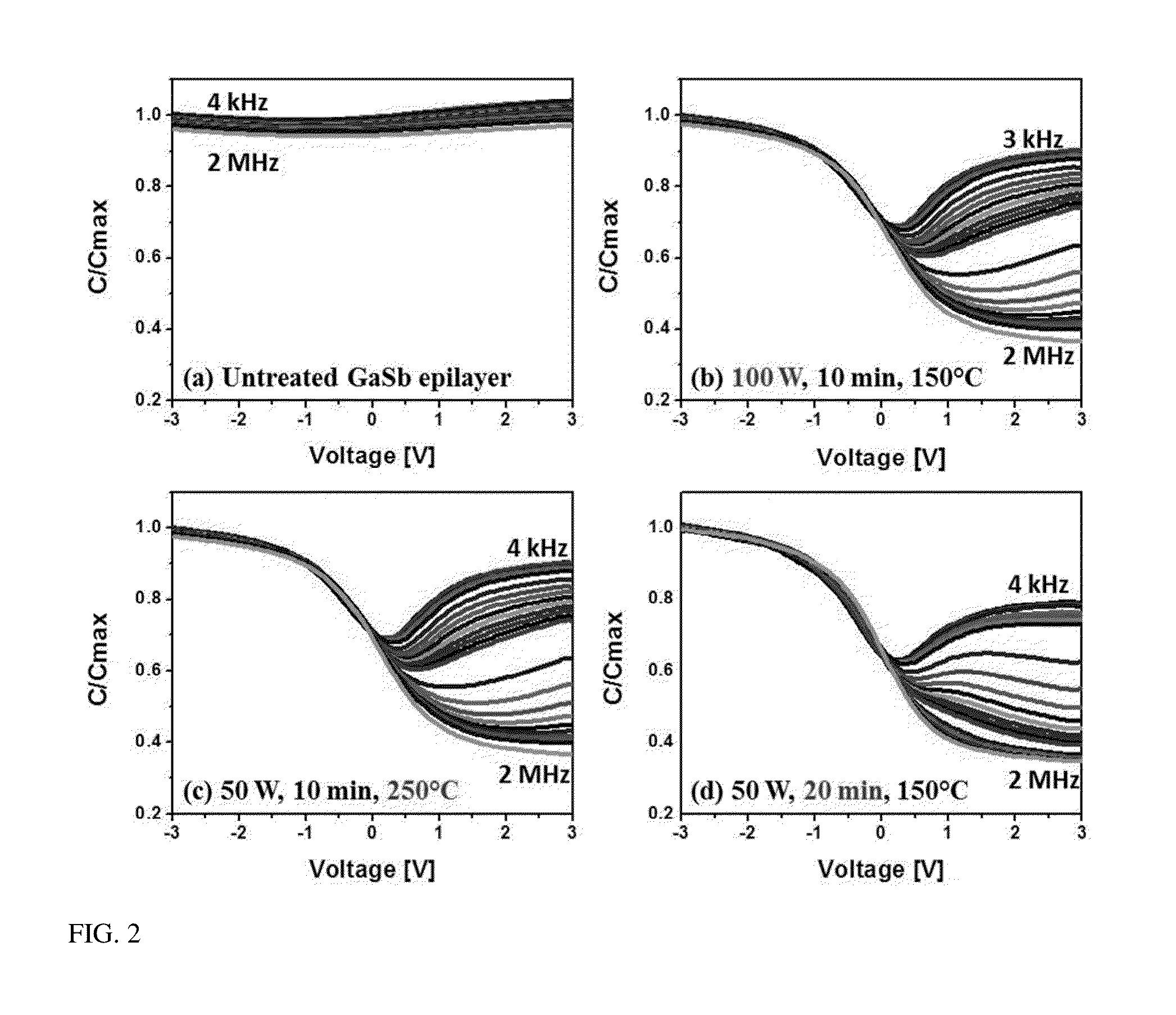Hydrogen-plasma process for surface preparation prior to insulator deposition on compound semiconductor materials
a semiconductor material and surface preparation technology, applied in the field of semiconductor materials, can solve the problems of lack of reproducibility and high defect of native oxides, and achieve the effects of reducing the probability of contamination or reoxidation of the surface, excellent charge modulation, and reducing the frequency dispersion of accumulation capacitan
- Summary
- Abstract
- Description
- Claims
- Application Information
AI Technical Summary
Benefits of technology
Problems solved by technology
Method used
Image
Examples
Embodiment Construction
[0018]In the present invention, semiconductor substrates are loaded into an atomic layer deposition (ALD) reactor. The samples are exposed to a hydrogen plasma that acts to remove and / or modify any native oxide present on the surface. The effectiveness of the removal and modification of the native oxide layer can be tuned by varying the substrate temperature, hydrogen plasma power, and / or hydrogen plasma exposure time. Following plasma exposure, high-k dielectric deposition is accomplished via a standard ALD process without breaking vacuum and without exposing the sample to the atmosphere.
[0019]Semiconductor substrates are loaded into an atomic layer deposition (ALD) vacuum system equipped with a hydrogen plasma source. Once under vacuum, substrates are heated to the desired processing temperature, typically 150° C. to 300° C., which is less than the native oxide desorption temperature. After the base substrate temperature is reached, the samples are exposed to a hydrogen plasma tha...
PUM
| Property | Measurement | Unit |
|---|---|---|
| temperature | aaaaa | aaaaa |
| temperature | aaaaa | aaaaa |
| hydrogen plasma power | aaaaa | aaaaa |
Abstract
Description
Claims
Application Information
 Login to View More
Login to View More - R&D
- Intellectual Property
- Life Sciences
- Materials
- Tech Scout
- Unparalleled Data Quality
- Higher Quality Content
- 60% Fewer Hallucinations
Browse by: Latest US Patents, China's latest patents, Technical Efficacy Thesaurus, Application Domain, Technology Topic, Popular Technical Reports.
© 2025 PatSnap. All rights reserved.Legal|Privacy policy|Modern Slavery Act Transparency Statement|Sitemap|About US| Contact US: help@patsnap.com


